Dmitri Piontkovski
Betti numbers of attention graphs is all you really need
Jul 05, 2022

Abstract:We apply methods of topological analysis to the attention graphs, calculated on the attention heads of the BERT model ( arXiv:1810.04805v2 ). Our research shows that the classifier built upon basic persistent topological features (namely, Betti numbers) of the trained neural network can achieve classification results on par with the conventional classification method. We show the relevance of such topological text representation on three text classification benchmarks. For the best of our knowledge, it is the first attempt to analyze the topology of an attention-based neural network, widely used for Natural Language Processing.
Acceptability Judgements via Examining the Topology of Attention Maps
May 19, 2022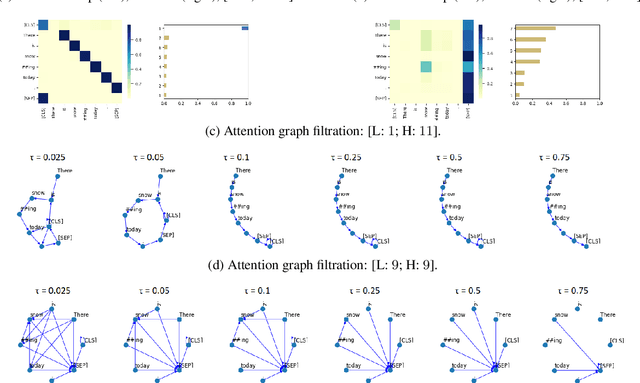

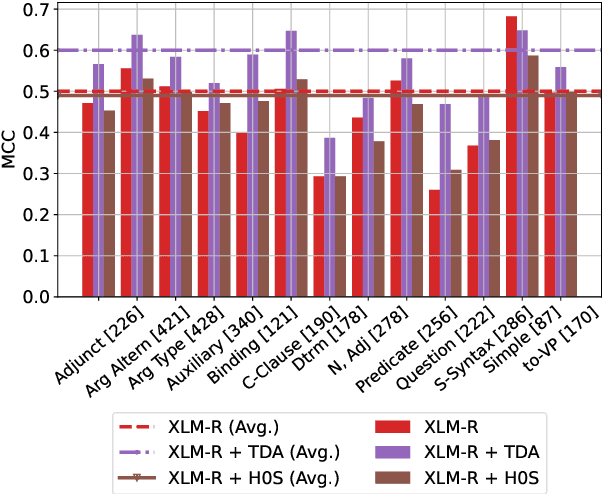
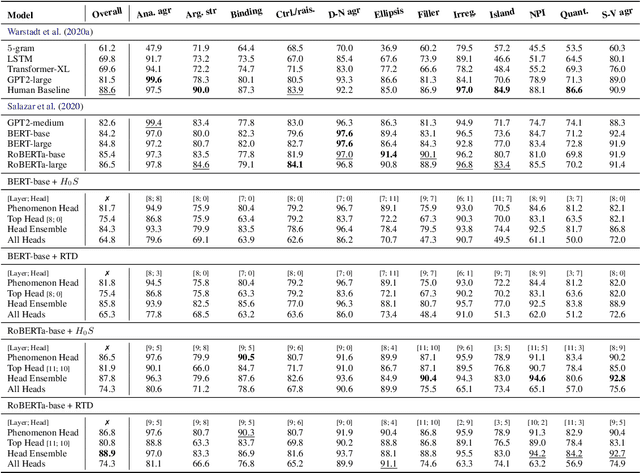
Abstract:The role of the attention mechanism in encoding linguistic knowledge has received special interest in NLP. However, the ability of the attention heads to judge the grammatical acceptability of a sentence has been underexplored. This paper approaches the paradigm of acceptability judgments with topological data analysis (TDA), showing that the geometric properties of the attention graph can be efficiently exploited for two standard practices in linguistics: binary judgments and linguistic minimal pairs. Topological features enhance the BERT-based acceptability classifier scores by $8$%-$24$% on CoLA in three languages (English, Italian, and Swedish). By revealing the topological discrepancy between attention maps of minimal pairs, we achieve the human-level performance on the BLiMP benchmark, outperforming nine statistical and Transformer LM baselines. At the same time, TDA provides the foundation for analyzing the linguistic functions of attention heads and interpreting the correspondence between the graph features and grammatical phenomena.
Artificial Text Detection via Examining the Topology of Attention Maps
Sep 10, 2021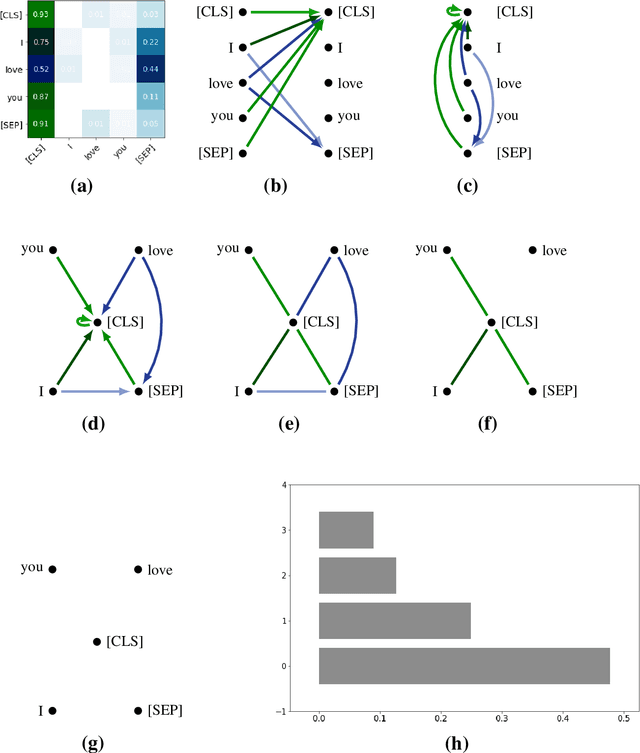

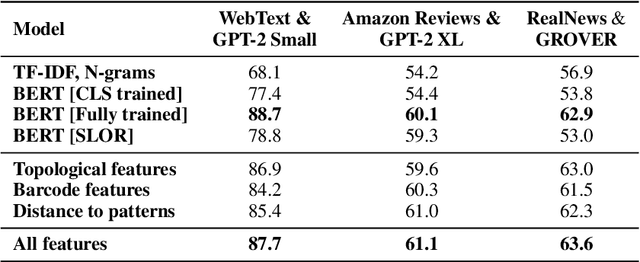
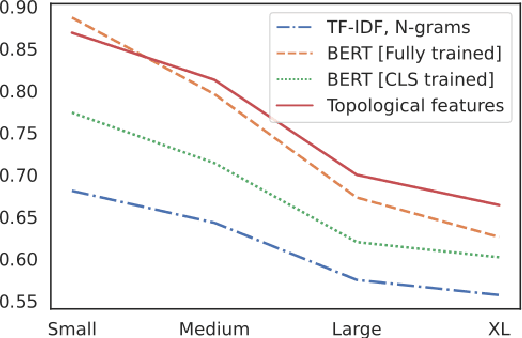
Abstract:The impressive capabilities of recent generative models to create texts that are challenging to distinguish from the human-written ones can be misused for generating fake news, product reviews, and even abusive content. Despite the prominent performance of existing methods for artificial text detection, they still lack interpretability and robustness towards unseen models. To this end, we propose three novel types of interpretable topological features for this task based on Topological Data Analysis (TDA) which is currently understudied in the field of NLP. We empirically show that the features derived from the BERT model outperform count- and neural-based baselines up to 10\% on three common datasets, and tend to be the most robust towards unseen GPT-style generation models as opposed to existing methods. The probing analysis of the features reveals their sensitivity to the surface and syntactic properties. The results demonstrate that TDA is a promising line with respect to NLP tasks, specifically the ones that incorporate surface and structural information.
 Add to Chrome
Add to Chrome Add to Firefox
Add to Firefox Add to Edge
Add to Edge